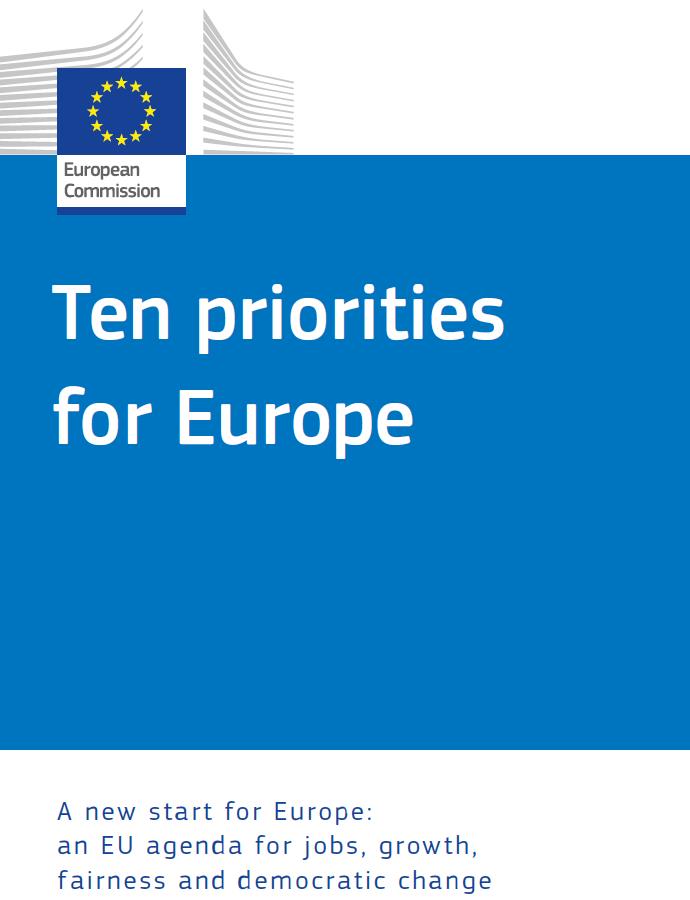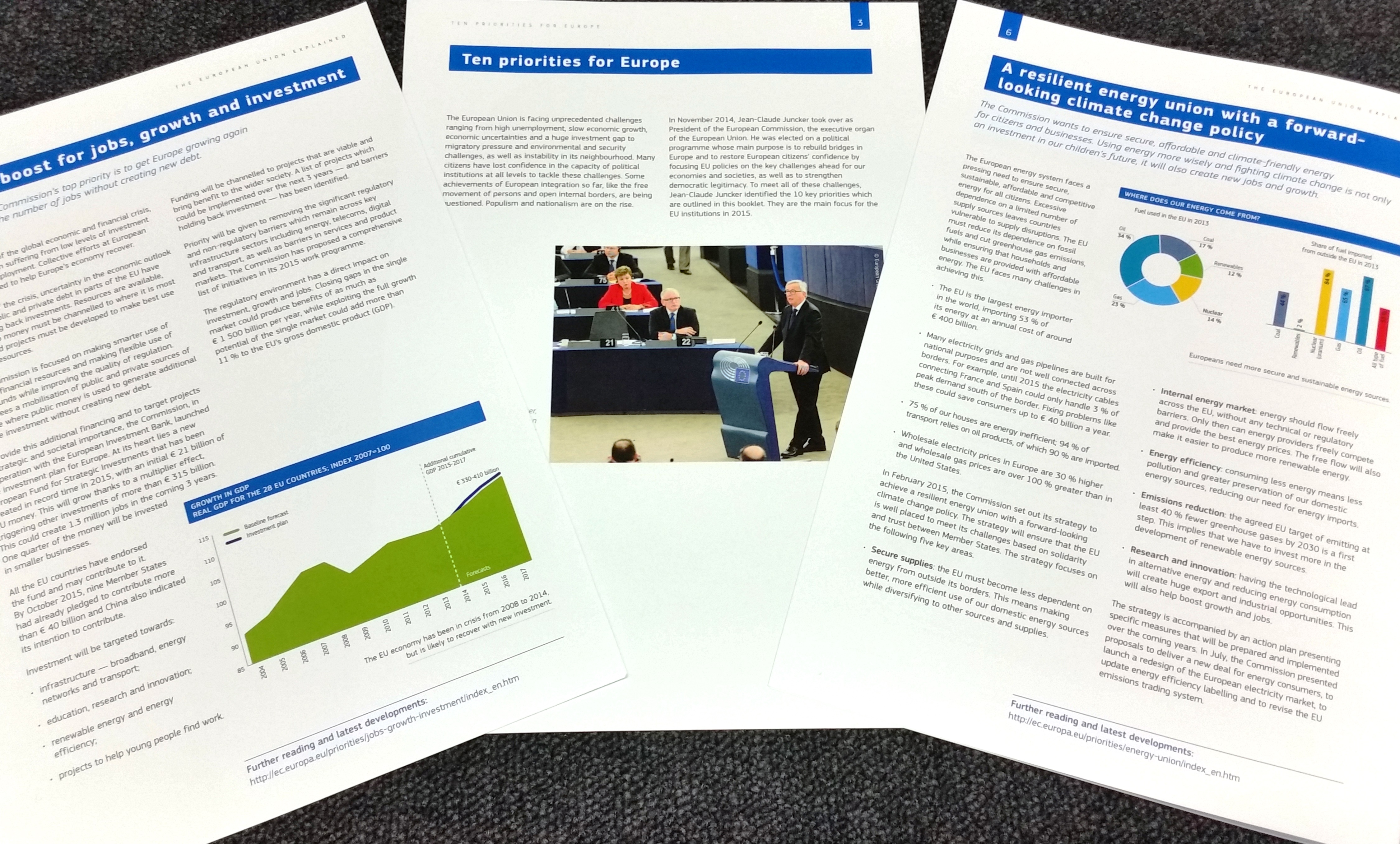'Ten priorities for Europe' - get the overview

date: 01/02/2016
Negotiations on a Free Trade Agreement with the USA to boost growth and jobs is well underway and red tape is being removed. A roadmap has been set out that will stabilise the euro area and allow Europe to move from crisis resilience to new growth perspectives. Priority is also being given to protecting Europe's citizens, creating a fairer society and maintaining Europe's leadership in global issues such as conflict resolution, humanitarian activities, development and climate change.
This publication explains what the Commission is doing in each of the ten priority areas. It provides an overview of the main initiatives proposed by the Commission and of the first results on the ground.
 This A4 format publication contains 16 pages, with one page of text for each priority, illustrated with simple infographics. You can make use of individual pages separately should you only wish to focus on specific priorities.
This A4 format publication contains 16 pages, with one page of text for each priority, illustrated with simple infographics. You can make use of individual pages separately should you only wish to focus on specific priorities.
It is made in all 24 official languages.
This publication forms part of the series 'The EU explained' that outlines what the EU does in different policy areas, why the EU is involved in those areas and what is being achieved. This means that distribution partners such as the Representations and Europe Direct Information Centres can request printed copies at any time via the order form. As usual, we recommend that you use the publication in its electronic format, as far as possible, and if you so wish, print the publication yourself on local printers.
